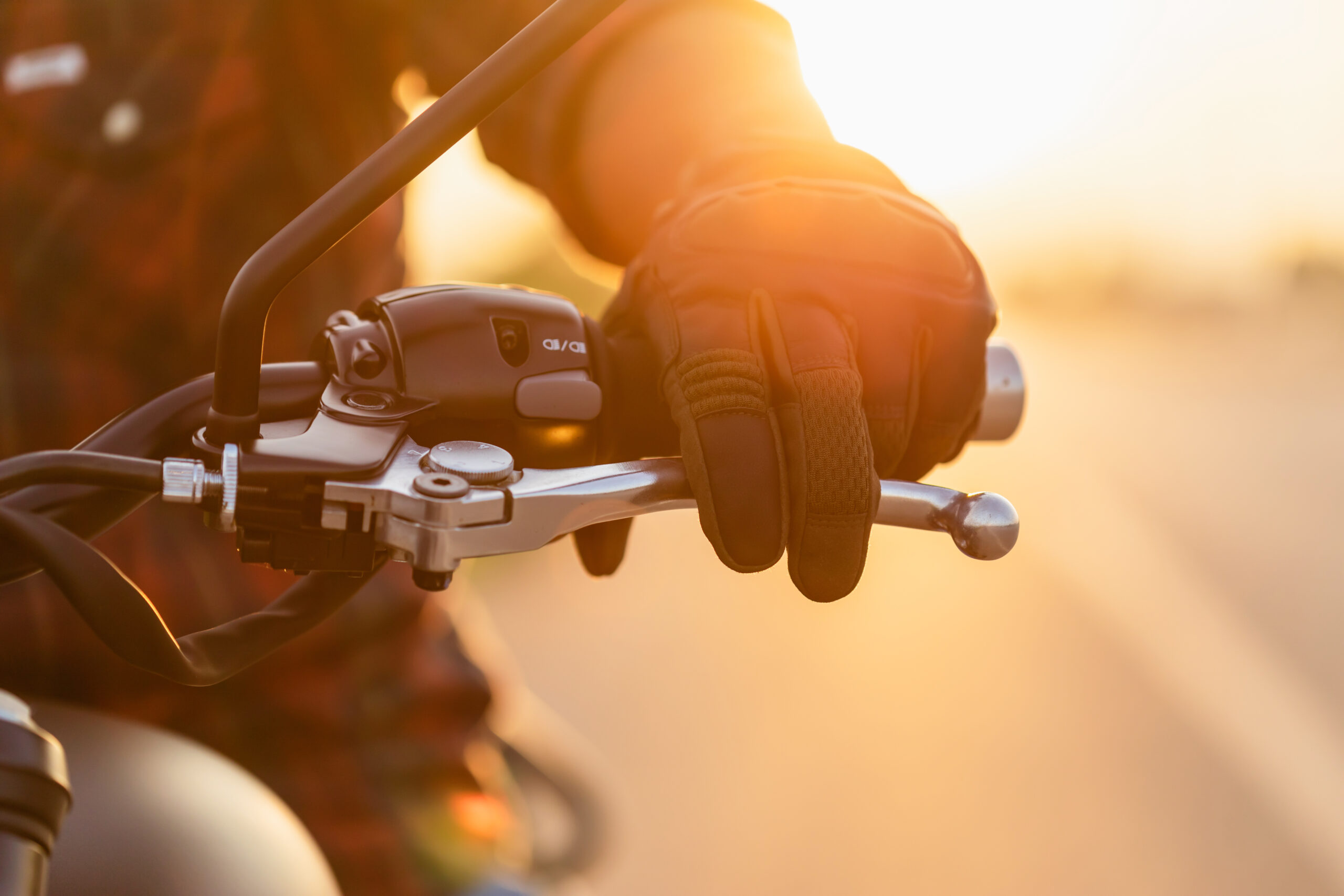Safe braking is vital to safe riding. Motorcyclists always need to keep their wits about them, and sometimes the only option is to brake sharply to avoid another road user who's strayed into our path.
But braking sharply in itself can be very dangerous: powered motorbikes of all sizes are finely balanced machines, and suddenly forcing on the brakes upsets their poise and can throw even the most experienced rider off.
That's why we should always ride at a speed that allows us to respond calmly to any developing hazard so we can brake in a controlled manner. By building in a 'safety zone' where we're not too close to the vehicle in front, and have a good view of the road ahead, we can make sure any braking we do is smooth and measured, bringing the bike to a stop in plenty of time and with us always remaining in control.
Never ride too close
The biggest risk we take is if we get too close to the vehicle in front. At 20mph no rider can expect to bring their bike to a stop under full control in less than 12 metres – that's three car lengths.
At 30mph this rises to a whopping 23 metres. That's six car lengths.
Next time you are riding, see if you could fit six cars in between you and the vehicle in front. We'll bet you can't, yet that's the distance it will take you to stop if you suddenly have to slam the anchors on.
If the car in front is slowing rapidly it will buy you some extra space but what if a vehicle suddenly emerges from a side road and hasn't spotted the oncoming biker? Could you stop in time?
It's one of the reasons it's a good idea to a) ride safely within the limit; and b) cover the brake as you approach a junction, particularly if there's a car looking to emerge.
Assuming you've never been seen is a good place to start.
Riding in the wet
Remember, those braking distances above increase dramatically in the wet; indeed, they can double. That's why it's important to cut our speed when it's raining or the roads are wet, and to increase the distance between us and the vehicle in front so we have extra time to stop if need be.
That will also mean we're not riding through spray kicked up by the leading vehicle, helping improve our visibility and making for a less uncomfortable ride.
Extra risks
Now it's summer we can leave those cold mornings behind and look forward to riding when we know the roads won't be icy. But that doesn't mean they won't be slippery. A sudden fall of heavy rain on very dry, dusty roads can make them incredibly treacherous for the biker; remember, everything is slippery when wet!
This is particularly true on non-traditional road surfaces, such as cobbles or block paving. You can even find you lose traction when riding over road markings.
Keep an eye out for a shiny, rainbow-like sheen on the road. It's a sign that there's been an oil or diesel spill, and it will be extremely slippery.

